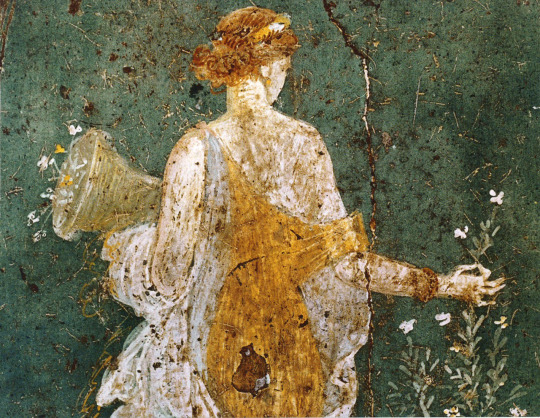Text
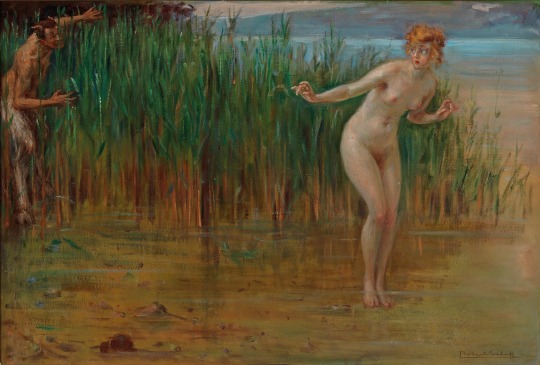
Surprised by the Faun by Robert Schiff (Early 20th Century)
366 notes
·
View notes
Text
"ODIN TAKE ME WHEN I DIE"
"SEEK VALHALLA SEEK A BRAVE DEATH ABOVE ALL"
"I WILL JOIN THE ONE-EYED WARLORD'S MEAD-HALL AND TOAST TO VICTORY OF MY KIN"
ok cool but what if it's freyja? what if you feel the touch of the valkyries making their death-choice upon your flesh and once you fall (gloriously, in battle, etc) you are among the half given not to odin but to freyja? what if you come to wander the endless plains of folkvangr and join the mistress of love and war in her dining? what if you come to be by her side for eternity where you may sit and sail and make merry in sessrumnir? what if you are given the chance to wipe the gold off her face and gaze upon her tearful eyes when she weeps over what is lost and hear her airy laughter for the joy for what is gained??? would that not be glorious????? would that not be all and everything????????
115 notes
·
View notes
Text
Some Freyja facts for those who want to know more! (an addition to my Aphrodite facts)
✶ As the daughter of Njord, the sea god, and sister to Freyr, the god of prosperity, Freyja holds a prominent position among the Norse gods.
✶ She possesses the magical necklace Brísingamen, acquired through a deal with four dwarves, which enhances her power.
✶ Freyja's name translates to "Lady" or "Mistress" in Old Norse, reflecting her status as a powerful and respected goddess in Norse mythology.
✶ Freyja is often associated with falconry, as she is said to possess a cloak of falcon feathers that allows her to transform into a falcon, granting her the ability to travel between the realms of the gods and the mortal world.
✶ In some stories, Freyja is depicted as the mother of two daughters, Hnoss and Gersemi, who are personifications of beauty and treasure, further emphasizing her association with wealth and prosperity.
✶ Despite her prominence, much of Freyja's mythology and worship have been obscured over time, with many details about her cult and rituals lost to history. However, she remains a beloved and enigmatic figure in Norse mythology.
79 notes
·
View notes
Text

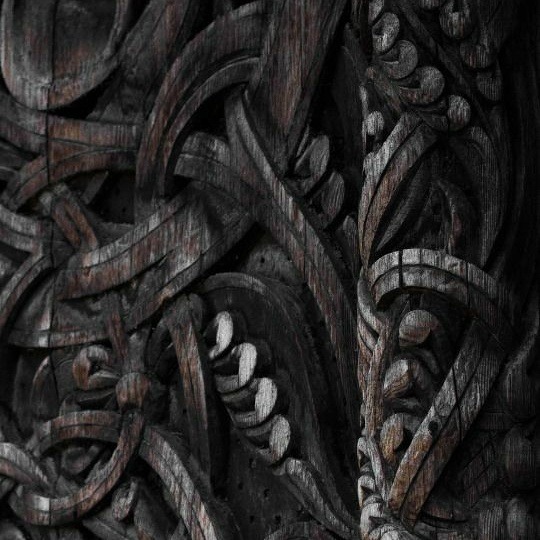
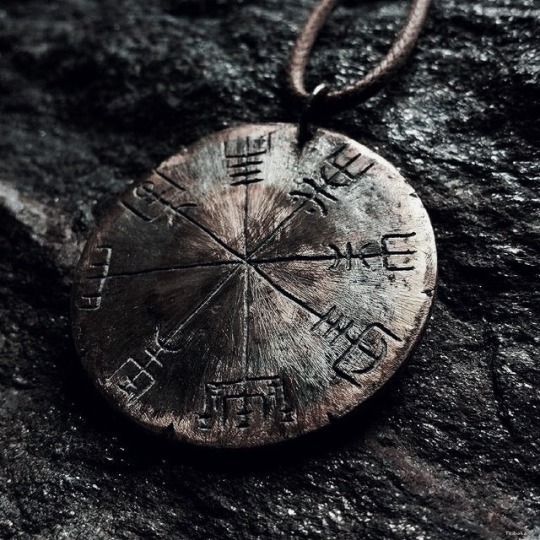
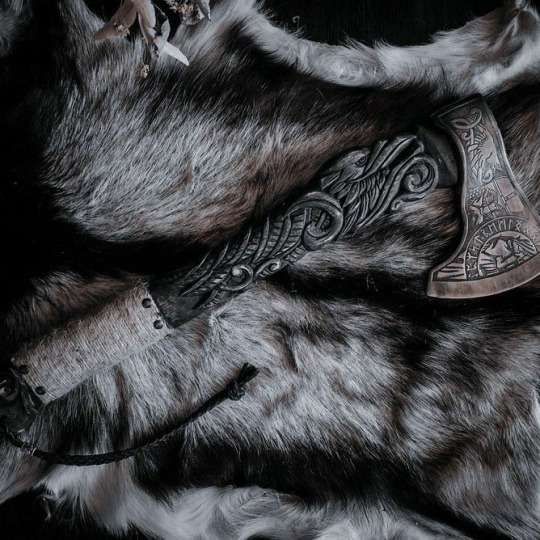

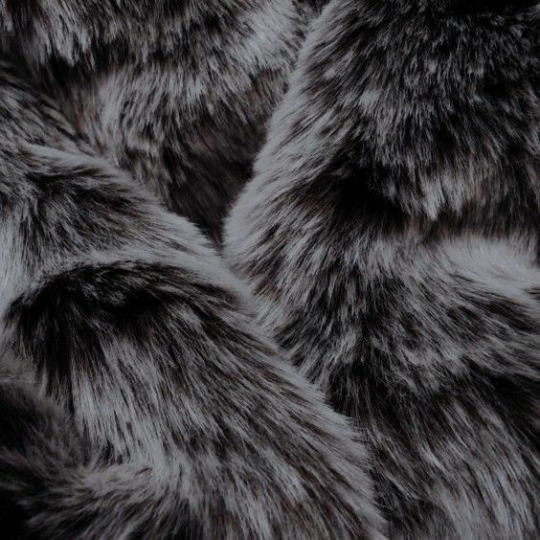

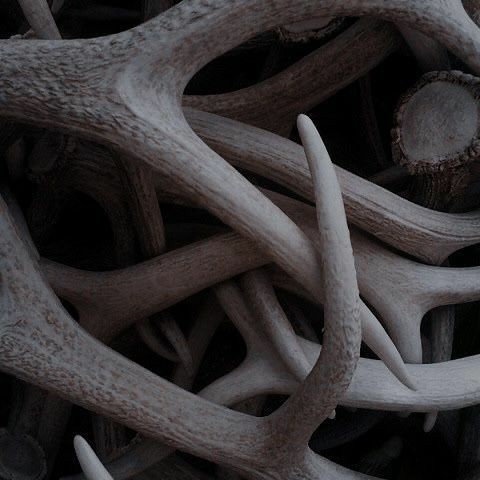
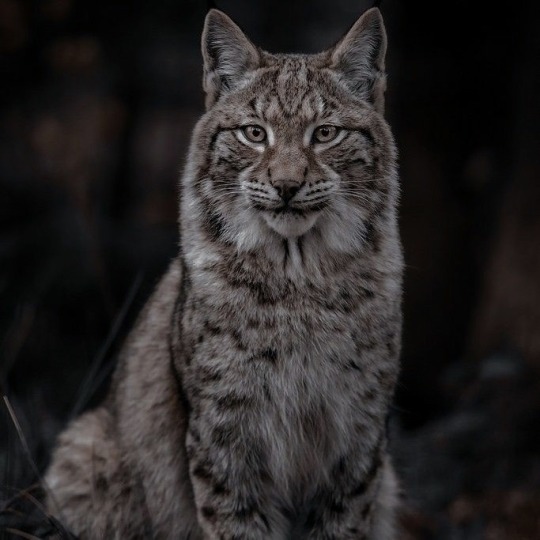
𝒇𝒓𝒆𝒚𝒋𝒂 ; 𝒈𝒐𝒅𝒅𝒆𝒔𝒔 𝒐𝒇 𝒍𝒐𝒗𝒆, 𝒃𝒆𝒂𝒖𝒕𝒚, 𝒘𝒂𝒓, 𝒔𝒆𝒊ð𝒓⚔️💛
[please reblog or like if you saved]
1K notes
·
View notes
Text


Ophelia, 1872 - oil on canvas
— Jean-Baptiste Bertrand (France, 1823–1887)
3K notes
·
View notes
Text
Flora

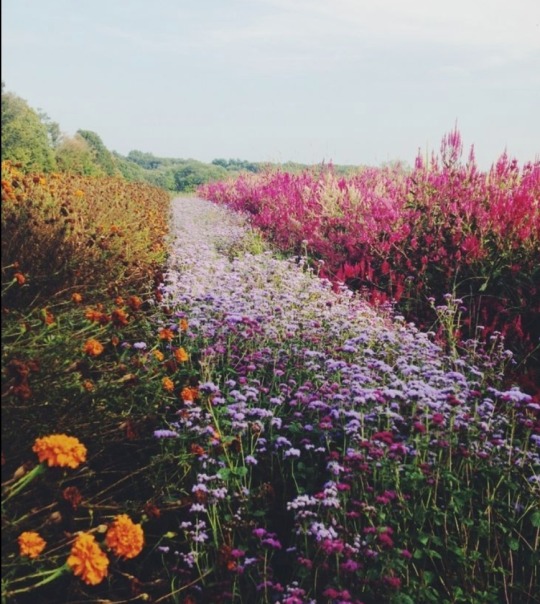


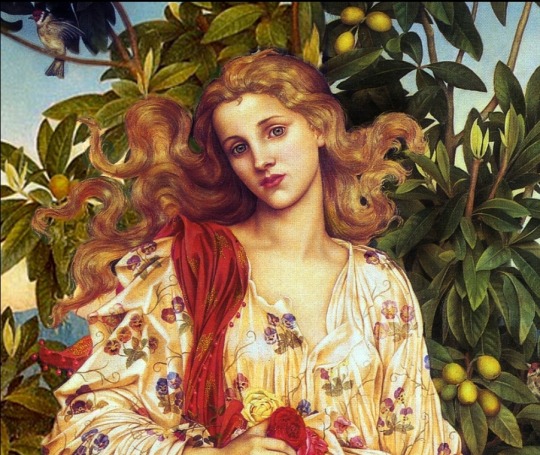




Roman Mythology: Goddess of Flowering & Fruit-Bearing Plants.
33 notes
·
View notes
Text
Floralia is coming up on April 28th-May 3rd!
Flora: Goddess of Flowering Plants

╔⏤⏤⏤╝❀╚⏤⏤⏤╗
“Perhaps you may think that I am queen only of dainty garlands; but my divinity has to do also with the tilled fields. If the crops have blossomed well, the threshing-floor will be piled high; if the vines have blossomed well, there will be wine; if the olive-trees have blossomed well, most buxom will be the year; and the fruitage will be according to the time of blossoming. If once the blossom is nipped, the vetches and beans wither, and thy lentils, O Nile that comest from afar, do likewise wither. Wines also bloom, laboriously stored in great cellars, and a scum covers their surface in the jars. Honey is my gift. ‘Tis I who call the winged creatures, which yield honey, to the violet, and the clover, and the grey thyme. ‘Tis I, too, who discharge the same function when in youthful years spirits run riot and bodies are robust.”
Ovid, Fasti book 5, Line 261.
╚⏤⏤⏤╗❀╔⏤⏤⏤╝
The Goddess Flora, originally a figure of the Sabine’s religion, was introduced into the Roman Pantheon by the Sabine king Titus Tatius who ruled alongside Romulus, the founder of Rome. Therefore, Flora was an ancient goddess that appeared before the rise of the Roman Republic. Flora would become conflated with the Greek Nymph Goddess Chloris.
She became the subject of the famous painter Sandro Botticelli’s “Primavera” (below) and details Her transformation from Chloris into Flora when Zephyrus (also known as Favonius), the Western Winds and soon to be consort, kissed Her. Botanists have identified many of the flower species that adorn Her in the artwork which include: Forget-me-nots, Hyacinths, Periwinkle, Pheasant’s eye, Anemone, Myrtle, Wild Roses, Violets, Cornflowers, and Wild Strawberries, all of which bloom in Tuscany in May. These flowers are suitable offerings to Her.

In Rome, it was pertinent to assign a Flamen (“he who burns offerings”), or devoted high priest, to certain major and minor gods. The Goddess Flora was assigned a Flamen, called Flamen Floralis, along with fourteen other Gods of the Roman pantheon.
As a minor Goddess, being assigned a flamen was out of the ordinary. According to Ovid, this was the result of the birth of Mars. When Jupiter birthed Minerva from his head, Juno became jealous because she felt betrayed. She was upset that Jupiter did not need her help conceiving and birthing a child. So, Juno went to her friend Flora who had a magick flower that impregnated anyone or anything that touched it. Flora touched Juno with her magick flower and Juno immediately became pregnant with Mars. When he was birthed, he was forever grateful to Flora and promised to watch over her blooming fields and have a flamen assigned to her. This, of course, contradicts the Greek myth in which Ares is the son of Zeus and Hera. Additionally, this explains Mars’ role as an agricultural and war deity.
Flora is known as the goddess of flowers, and fruit-bearing and flowering plants. She is heavily revered in May springtime and a six day festival known as Floralia was dedicated to her which began on April 28th and ended on May 3rd. The festival included adorning one’s bodies with flowers and bright colors, dancing, drinking, feasting, theater, singing,wearing perfumes, and general merriment that accompanies the beginning of Spring.
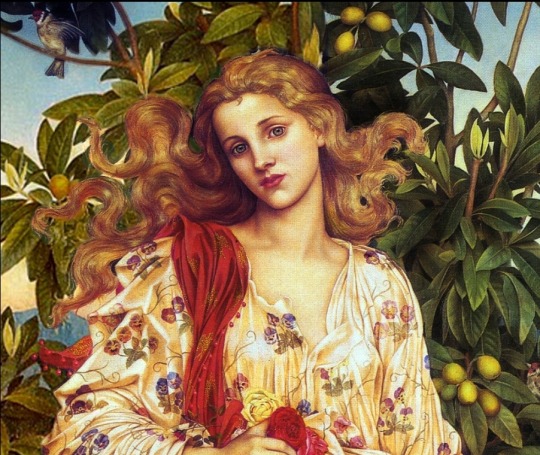
Painting by: Evelyn De Morgan, 1894, Flora.
Her spring and flower associations brought forth symbols of youth, nature, vegetation, gardens, fertility, sex, desire, transformation, and abundance. Her marriage to the West Winds also contributes to her Springtime associations. With these associations in mind, some offerings that would appease her might include:
┌──❀*̥˚───❀*̥˚─┐
🍊Spring garden fruits and vegetables
💮Pressed and dried flowers
🕯Citrus scented candles
🌼Freshly picked flowers
🌿Hand-made wreaths
🧺Hand-made baskets
🧴Floral Perfumes
👑Flower Crowns
💐Bouquets
🌺Garlands
🫒Olive oil
🍯Honey
🍷Wine
🥛Milk
└───❀*̥˚───❀*̥˚┘
Some activities that you can do in Her honor can include things like planting flowers in the garden, growing seasonal fruits and vegetables, general upkeep of gardens and soils, creating scented cleansing sprays and soaps, making flower crowns and other inspired crafts, writing poetry and prayers dedicated to Her, strolling the countryside, wearing brightly colored outfits, and taking care of the gorgeous Earth we live on today.
Pray to Her for abundance, personal growth, positivity, protection of gardens, and thank Her for bountiful spring fruits and vegetables. She is a very loving goddess and deserves recognition for the many qualities She has brought to my life and to that of others.
Paganpillar
Sources:
Ovid Fasti
https://apercu.store/journal-archive/a-brief-history-of-the-goddess-flora
https://www.vindolanda.com/blog/flora-the-goddess-of-flowers
#roman mythology#greek mythology#Flora#Flora Goddess#chloris#Chloris Goddess#roman paganism#greek paganism#hellenic polythiest#hellenism#polytheism#polytheist#roman deity#roman goddess#greek goddess#greek deity#hellenic deities#deities#deity#Mars#Juno#Ovid#pagan#paganism#Greco-Roman#Greco-Roman mythology#Greco-Roman Pagan#Greco-Roman paganism#greco roman paganism#religio romana
17 notes
·
View notes
Note
When you feel the most disconnected from the gods, what do you do to improve that feeling?
Hi there! Thank you so much for the ask. I think this is such an important question to ask ourselves, as pagans. After all, each and every one of us experience periods of both high and low spiritual connection. Feeling disconnected from the Gods is a perfectly healthy and normal part of the pagan religious experience.
I find that this often happens when elements of our lives make it harder for us to feel connected to anything, really. For example in my case, I might feel so stressed by something that my mind is always wandering back to the cause of stress rather instead of focusing on my hobbies, my well-being, etc... It's interesting to observe that when in a perfectly content state of mind, we might naturally, subconsciously devote a certain amount of time to our spirituality in order to feel connected. While we might not usually notice this habit, it's easy to realize that we do feel less connected when that amount is not met. And the various stress factors of life are often exactly what keeps us from devoting to spirituality whatever amount of time we naturally would be inclined to devote.
I believe that's because mental health and spirituality go hand in hand. If you're somebody who needs to nurture a spiritual aspect in their life, you'll notice that when mental health thrives, spirituality does. The opposite is also true. But there is nothing wrong with that! Much like spirituality, mental health experiences high's and low's as well. We're constantly working to improve both these aspects of our lives, and sometimes, it's easier said than done.
In my experience, disconnection from the Gods is a terrible, terrible feeling to have to go through. However, considering I've been practicing for about eight years now, I've had time to adjust and develop strategies to both cope with the feeling and find solutions to it. No matter what the situation is, I think that the most important is to start by understanding why it is we feel this way. I've come to understand that if I feel disconnected, it's because my mind is clouded by stress, depression, or other factors of discontent. I've always thought faith was one of the most important aspects of religious belief. It's like a flame that never goes out, no matter what happens. And so I tell myself that no matter what, the Gods exist as they've always had. They haven't disappeared and they certainly haven't abandoned me. That's the first step which keeps me going though these rough patches. And in the meantime, I try to stay connected as much as possible, even if the "feeling" of closeness with the Gods has faded for the time being. I keep lighting my devotional candles, I keep making offerings when I can, and above all, I keep praying. Even if I don't necessarily feel heard, I have faith that I am being heard, and that the Gods still listen, as they've always had.
63 notes
·
View notes
Text
Holy spaces & shrines in the modern norse path
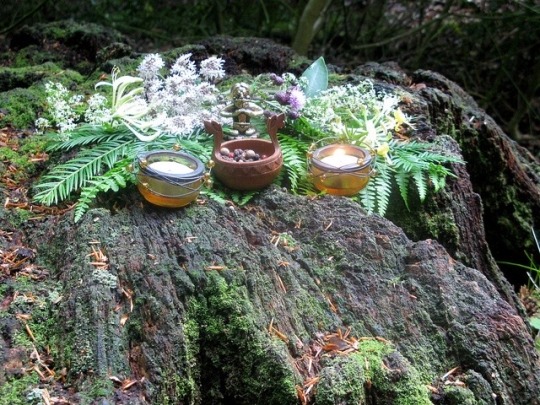
Before we dive into the oh-so-diverse topic of holy spaces, let me first specify a few practical tips!
I’m very much aware that the definition of the term “holy” is deeply subjective and varies depending on one’s opinions. I’ll elaborate on a few of my thoughts on the topic further!
In no way are you bound by any rule regarding this aspect of paganism.
I will base my post off of my research, granted, but also on my personal experiences and practices!
Now, what makes a holy space sacred? Not necessarily "holy" per say, but simply sacred.
The very first factor to consider is, what is sacredness? Lots and lots of pagans engage mostly in solitary practice, so much is true. Which is why lots of us find ourselves gravitating towards spaces others may not necessarily find any sense of "sacredness" in. The corner of your room where you tend to pray the most? Sacred. Or the spot in your garden where you perform your harvest ritual every year! It’s the connection we feel to the space that makes it sacred in the first place. But a space being holy depends on whether or not we choose to anoint it in such a way.
When something is sacred to me, I tend to feel a sort of spiritual pull. A swelling of the heart, if you will, like the feeling I get when faced with a breathtaking landscape. The feeling of spiritual connection to a particular spot is the first intuition one needs to tune into when choosing a holy space. After all, staying in tune with one's intuition might be one of the most important aspect of any spiritual practice.
Within nordic practice, a holy space is often called vé, a sacred enclosure. Vé's are attested in numerous toponyms as well as ancient texts, such as Beowulf, or the Skáldskaparmál. Their omnipresence in Scandinavian toponyms might, when considered through a pagan lense, signify something quite interesting: the holiness of a space depends on the space itself, its location, rather than what's inside it— or rather, how grand and ornate it is. When building a holy space for oneself, one does not need lavish decoration, or an elaborate shrine with the gold foil and the statues.
However, there are a few steps one can follow in order to anoint a space as holy, if one wants to reconstruct a few practices from pre-Christian Scandinavia. Although I'll specify that as always, no rule is set in stone when it comes to neopaganism. The choice to abide by them or not is entirely up to the practitioner. And in any case, even as I was gathering these few ideas, it was clear that, as always, pre-Christian practices centered around holy spaces vastly differed depending on the place and the time. Regardless, I think it's fun to do some research on the topic in order to reconstruct on our own terms a holy space in the nordic tradition.

The first step? Having a good knowledge of your area. Both before and during the Viking Age, holy places were more often than not located outside. It can be a great help to know where to find the greenery in one's area. Is there a beach near home that the public has access to? How about a large park where you can spend some time alone without being bothered? Even your backyard does the trick! Anywhere you can see the sky and breathe the open air is already perfect. Now, the Germanic tribes would generally worship near an object of particular importance, such as a grove, a body of water, a clearing in the forest, a hill... Although this doesn't seem to be very present in historical attestations, and considering I'm devoted to Yngvi-Freyr, I'm an especially big fan of worshipping in plains, or fields!

I think it's important for me to note that if you are lucky enough to live near a body of water, you can choose to engage in one of the most popular forms of offering in nordic historical practice: throwing offerings out to sink into the water! This practice was especially widespread, evidence of it having been found as far as Britain and Iceland. Evidently, if one chooses to engage in such a practice, it's important to respect the ecosystems and stick with offerings that won't damage them (acorns, stones, flowers and the like). As for an outdoors shrine located in a forest, or near woodland, it would have been customary during pre-Christian times to center a holy space around a tall tree, perhaps representing the World Tree Yggdrasil.

Considering lots of neo-pagans prefer to keep their practice discreet, it goes without saying that the holy space of your choosing does not need to be especially big, nor especially decorated. It can be as small as it is humble! One of the spaces where I most like to worship is the little corner of the yard, tucked under a cedar tree, where I rebuild my hörgr every year, as soon as the snow melts for good. Nothing too flamboyant!

Now, the second step to building a little outdoors shrine for yourself is to choose a representation of the deity to adore. It's said that the human-like appearance of this representation mattered little to the Germanic tribes, whose representations of the Gods could be rather simple, and not especially ornate. For this reason, it would be perfectly logical to even choose an object associated with the deity in question to serve as the main representation placed in the sanctuary. If we're talking about Freyja, a falcon statuette, or feather could do the trick! As for Fenrir, any wolf imagery could work as well! In the case of Thórr, one could replicate the case of Donar's Oak and choose to center their shrine around a particular tree (the rowan are the oak would make the best choices, if one is to pick a tree sacred to Thórr). These are just examples, and the possibilities in this regard are limitless. This "main" representation can be used as the center of your sacred space, and given offerings during rituals or celebrations. In my case, I like greet this representation both when "entering" the sacred space and when leaving it, as a sign of respect!

If one so desires, it's possible to set up some kind of "delimitation" in order to mark the entrance of the sacred space, or its outline. I like to place either ribbons on nearby branches, or litter stones here and there to lie in a loose circle (we wouldn't want to block the rays of the sun from reaching the earth and keep the greenery from growing). In order to signal the entrance of shrines, the Germanic tribes would generally use heaps of dirt or pillars of stone, among other things.
Another intresting element one might include in their sacred space is the presence of fire! Whether this be a bonfire, incense, a simple candle or even just a handful of ash, there's lots of ways to include the "element" of fire into a modern day shrine. It's a means of warming up the space, so to speak: tending a fire in the shrine is akin to having a hearth in the home!
Ideas for common, historically attested offerings: Ethically-sourced animal bones, gold or golden jewelry, tools, representation of the Gods, beads and beaded jewelry, alcohol, food and meat…

Now, let's pull away from the history lesson and let's dive into modern, neo-pagan practice! I'd wager some of you are wondering, how exactly can one keep a whole shrine, but make their practice as low-key as possible?! After all, I know firsthand that solo practice is especially common among neo-pagans. So my answer to this question is, who said anything about keeping? One piece of advice I've already given to a few fellow pagans in the past is to create a little portable shrine all to yourself! Let me explain myself: you arrive at your chosen location, you put down a basket full of decoration and you put up a temporary space in which to worship for an hour or two. You take out a deity representation, a few candles (if they're allowed on site!), a handful of offerings and a cloth on which to place them. And when you're done with the ritual, you pack up your things and make sure you leave the site as clean as when you first found it. In other words, what I’m suggesting is the possibility of gathering a few designated worship items in order to make oneself a portable, personal little shrine! It might seem like a silly idea at first, but I’ve discovered it’s not only a fun habit, but it’s also greatly helpful on a tight schedule to have a quick and easy way to engage in outdoors practice.
As always, I wrote this post aiming to help fellow pagans find ways to balance historical practice and modern, solo practice! I hope these few ideas did the trick, and wish you all a good and plentiful spring season!

First picture
108 notes
·
View notes
Text


if I won the lottery I wouldn't tell anyone, but there would be signs...
777 notes
·
View notes
Text



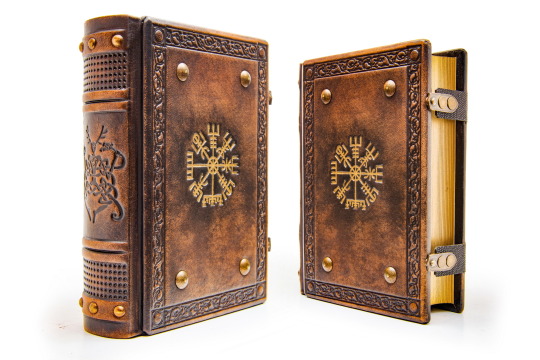

Leather journal with the Vegvisir and Cernunnos symbols...
The Cernunnos symbol on the book spine is artwork by Dashinvaine:
www.deviantart.com/dashinvaine
93 notes
·
View notes








